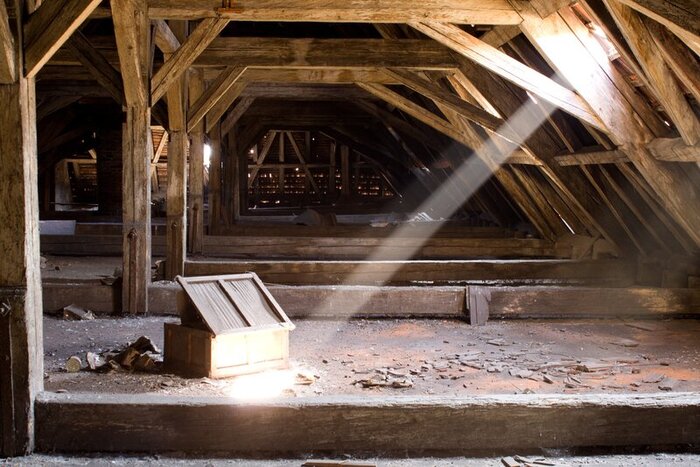
When’s the last time you took a good, detailed lookup in your attic? If you’re like most people, the attic is a major afterthought, and that can lead to dangerous outcomes.
Here are five of the ways your attic can become a danger zone. By inspecting your attic at least once a year, and addressing red flags before they get worse, you’ll make sure your attic is able to do the job it was meant to do - improve whole-home energy efficiency.
The attic and roofing systems work together to both protect your home from the elements as well as to support energy efficiency. If your roof springs a leak, your attic is typically “the first to know.” However, it can take weeks or even months for roof leaks and moisture infiltration to make its way through structural supports and into main living areas.
At that point, structural decay may already be in motion. Your roof may have a repair that is beyond the “minor” repair phase, requiring more costly repairs or a roof replacement. In worst-case scenarios, your roof could be at risk for partial or total collapse during the next storm season.
Have you heard any scratching or scurrying in the ceiling above you? If so, there is a good chance your attic harbors pests. While this might seem like only a minor inconvenience, rodents pose serious risks to the pets and occupants in your home if they aren’t trapped and eradicated ASAP.
Read our post, ...Attic Pests and How to Get Rid of Them. If the infestation or cleanup is beyond your DIY abilities or interests, contact a professional to take care of attic pests for you.
If you live in an older home, odds are your insulation and attic ventilation are outdated. Pair that with any leaks or moisture issues, and you’ve provided the perfect environment for a mold and mildew bloom.
In addition to the structural rot they cause as a result of their voracious appetites for organic materials, mold and mildew pose are linked to respiratory and health issues. People who live in homes with mold and mildew spores are more prone to:
Unfortunately, mold and mildew spores are invisible and easily spread through a home’s forced-air systems. As long as you’re inspecting your attic, we recommend reading Bob Vila’s post on How to Test for Mold Even if You Can’t See It. If your tests reveal your attic has mold, work with professionals to conduct a full attic cleaning and sanitation protocol.
We’ll also work with you to prevent the factors that lead to a mold/mildew issue, such as:
Most people either neglect their attic altogether, or they use it as seasonal and historical storage. We understand the convenience of using your attic for storage. However, we recommend having the attic professionally inspected to ensure it can carry the load. Most modern attics weren’t designed for anything other than air space, insulation, and ventilation - so storing anything of substantial weight poses the risk of a cave-in.
Whether you’re using the attic to store things or are using it as an extended living area in your home, we recommend reading, Converting Attic Space Into Living Space: How It’s Done. There, you’ll glean insight into how to establish your attic is structurally sound enough for its current usage, or how to go about ensuring your attic can be used as you want it to be.
Speaking of using the attic as storage. There are some things that should never be stored in the attic. Period. This is because they post a fire or toxin risk to your home occupants and pets.
Our post What NOT to Store in the Attic covers this topic in detail. Examples of stored items that can make your attic a dangerous place include:
If you are storing these or similar items in your attic, we recommend removing them immediately. They are best off stored in a detached garage or outdoor storage shed where there is plenty of ventilation and no direct access to people, children, or pets.
Is your attic looking like it could use some organization, cleanup, reinforcing, or other forms of attic TLC? Contact the Attic Solutions Team. From removing and replacing outdated insulation to full attic clean-up and sanitizing, we base our business around making Bay Area attics safe for homeowners and occupants.
You can contact us online or give us a call at (510) 500-5007, and we’ll schedule a free consultation and a competitively priced estimate. If your attic requires additional work, we’re happy to refer you to local, licensed Bay Area contractors or roofing professionals.